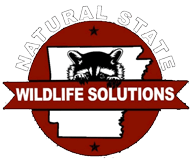The human population increases by at least 1% annually. That’s about 81 million new people occupying the planet each year. We are continually clearing new land and commandeering resources for our use, and, as a result, wild animals are being chased from their natural environments. Disasters like wildfires, flooding, and climate change also have an impact. These displaced animals often invade our spaces in very disruptive ways. For homeowners experiencing those conflicts, the solution is habitat modification.
The Basics Of Habitat Modification
The term habitat modification can have different meanings, but in its simplest terms, it is the act of altering an area to better accommodate the species that wish to reside there. For example, when we build a dam or reroute water sources to support human life in once-arid regions, we are engaging in a form of large-scale habitat modification. The specific type of habitat modification we are concerned with here involves wildlife management. As a service, it means altering the area surrounding our home or business to dissuade unwanted pests from infringing upon our property.
This process may be as easy as grass mowing or clearing away brush or more complex, depending on the situation. We accurately identify the animal(s) causing the issue and then focus on that animal’s preferences and attractants, and lastly, we implement a strategy that will remove those attractants and compel the animal to go elsewhere. Here is how it works:
Removing Or Changing The Vegetation In The Area – Vegetation can be food and shelter to an invading pest. Simply changing your landscaping to different types of less appealing vegetation may do the trick. Geese, for example, love to feed on the tender shoots of tall grasses. Coyotes and rodents will seek fruit trees because the fruit is an easy meal when it falls to the ground. Rodents and snakes also love to hide out and nest in tall grass.
Altering Water Sources – Water is just as important to an animal as food. If you have an accessible water source on your property, you can bet it is being used by wildlife. By removing that source or making it harder to access, you will deter that use. Muskrats, for example, are a semi-aquatic, invasive pest that will be found around water.
Implementing Fencing And Other Barriers – Barriers have been an effective deterrent when designed in a way that prevents or minimizes access. We also use it as a “suggestive pathway” to channel wildlife away from you. This can be exceptionally useful when dealing with larger animals like bears and deer.
Providing More Attractive Nesting Structures Away From Your Property – You may have certain materials around your property that make ideal nesting materials for pests. We remove and relocate those materials, or provide a better option, like pre-made bat boxes.
Removing Dead Trees – Dead or fallen trees are much more than just a hazardous eyesore. They are a resource for many animals like birds, squirrels, and snakes, as they provide nutrients, shelter, food storage, and more. By simply eliminating the wood or moving it to a more suitable place, we can significantly reduce wildlife visitations.
Making Adaptations To Nearby Forested Areas Or Fields – By pushing back or clearing the edge of a forest or field that borders your land, we draw wildlife away from you, as it will no longer have such a close vantage point where it feels safe to linger. Trees that are growing too close your house are a conduit to your roof for animals like rats and raccoons.
The wildlife in Northwest Arkansas is varied and abundant. Many different animals target our homes or neighborhoods, searching for food, water, and shelter. Even if we don’t confront them, merely being in their vicinity leaves us vulnerable to the different diseases and parasites they carry. That’s why habitat modification is so important.
While our human population is steadily on the rise, the unfortunate truth is that wildlife populations have been declining for decades. Preservation is a serious issue, and we must do our part. It is best to avoid harsh measures whenever possible. There are cases when people wish to attract, rather than deter, certain types of wildlife to their property. We can help with that too.
Choose Natural State Wildlife Solutions
At Natural State Wildlife Solutions, we take a respectful, eco-friendly, and humane approach to our services. We are also the top-rated habitat modification specialists in Arkansas. If you are having issues with wildlife, we can help. We’ll do a thorough assessment and devise the perfect modification plan to end those conflicts now and in the future. Give us a call, and let’s get started.
